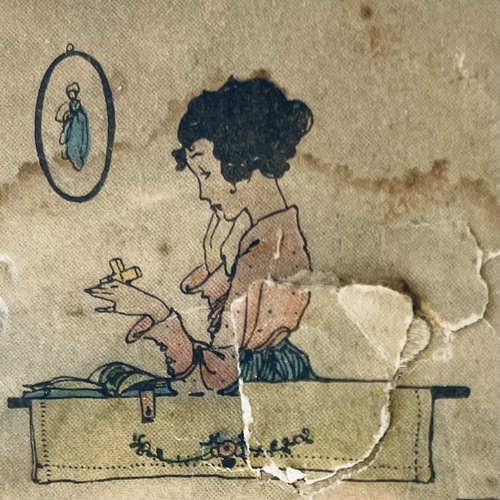History of Wire Puzzles (as I see it)
I’ve always assumed that wire puzzles have had a long history, so trying to trace its origins would be a fruitless endeavor. However, wire puzzles may be more recent than I thought, possibly dating back just to the 1860s. This makes sense when you think about the availability of wire. Wire probably wasn’t very common to the average person until its use with electrical applications like telegraphs, telephones, and indoor lighting.
Of course there is one big exception to this - the patience puzzle - which can be traced back much further. It has been known by many other names such as Chinese Rings, Baguenaudier (French for time-waster), Cardan’s Rings and Tiring-irons. The earliest known description is in Luca Pacioli’s unpublished manuscript “De Viribus Quantitatis” [1], dated between 1496 and 1508, so it’s at least that old. This predates the more well known description in Girolamo Cardano’s 1550 book De subtilitate. I feel part of the reason why this one is a special case is because it was also made from other material - like bone, ivory, jade, and forged iron - so didn’t require the availability of wire to be produced. No fanciful bends of wire were needed beyond simple rings.
 Patience puzzle, made in ivory [Source]
Patience puzzle, made in ivory [Source]
Other than the patience puzzle, when do we start seeing mentions of wire puzzles in the literature? According to Google’s book search, there seems to be very few, if any, mentions of “wire puzzle” before the 1860s that aren’t referring to the patience puzzle. Indeed, if you look at the “Magician’s Own Book” from 1857 or “The Book of 500 puzzles and curious paradoxes” from 1859, there are many puzzles listed, but no wire puzzles beyond the patience puzzle.
This lack of wire puzzles can also be seen in Google’s Ngram viewer. Wire puzzles aren’t mentioned until the 1860s, and increases until it peaks in the late 1930s.
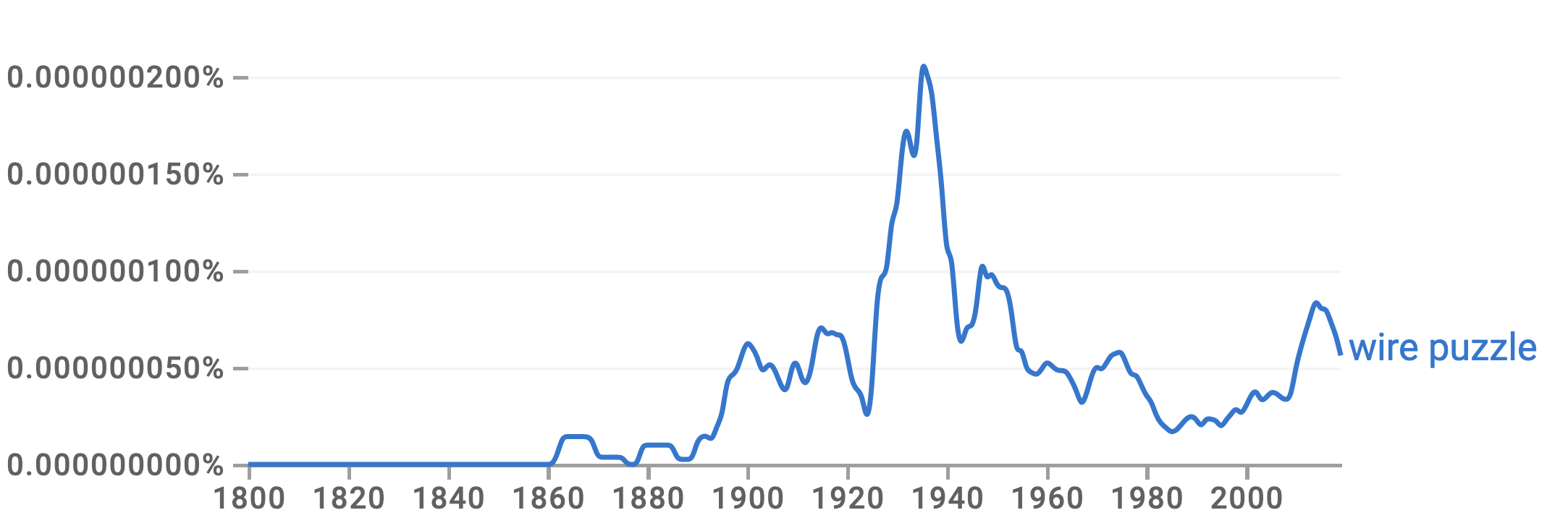 Mentions of "wire puzzle" in books throughout the years
Mentions of "wire puzzle" in books throughout the years
As I alluded to earlier, it’s attractive to think that maybe the rise of the telegraph and telephone assisted in the popularity and availability of wire puzzles. If you look at the graph for wire, there is a similar rise, which seems to go hand in hand with telegraph and telephone. Of course, this is pure speculation on my part but seems very plausible. Barbed wire was another invention with wire around this time, although that seemed to occur later in the 1800s, so doesn’t explain why we start seeing wire puzzles in the 1860s.
 Increased usage of 'wire' in books, correlated with increased usage of 'telephone' and 'telegraph'
Increased usage of 'wire' in books, correlated with increased usage of 'telephone' and 'telegraph'
The earliest reference I could find on wire puzzles other than the Patience Puzzle, is the 1860 American Agriculturist, volume 19. It has a nice illustration of a wire puzzle that the readers can make themselves. The article mentions that this puzzle was invented by “Some ingenious person in this city”. I’m not sure which city this is referring to, but possibly New York since this is where the magazine was published.
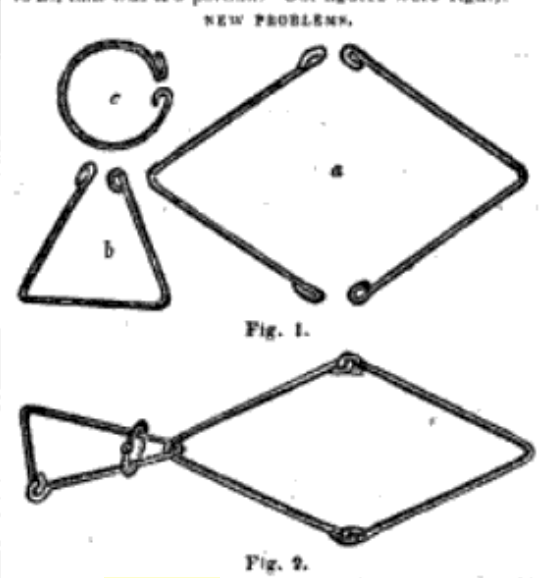
Wire puzzles can be further classified as soft (thin) or hard wire. Soft/thin wire puzzles are puzzles where the thickness of the wire doesn’t contribute to the puzzle. If the wire was infinitely thin, then it would still function as the same puzzle. Hard wire puzzles, on the other hand, have a thickness that typically plays an important part of the puzzle (think bent nail puzzle). If the wire was infinitely thin, the puzzle would become trivial. The earliest example I could find of one of these puzzles was from an 1868 patent. This patent referred to an earlier hard wire puzzle known as the “Roman Question”. The Roman Question was a term first used in 1859.
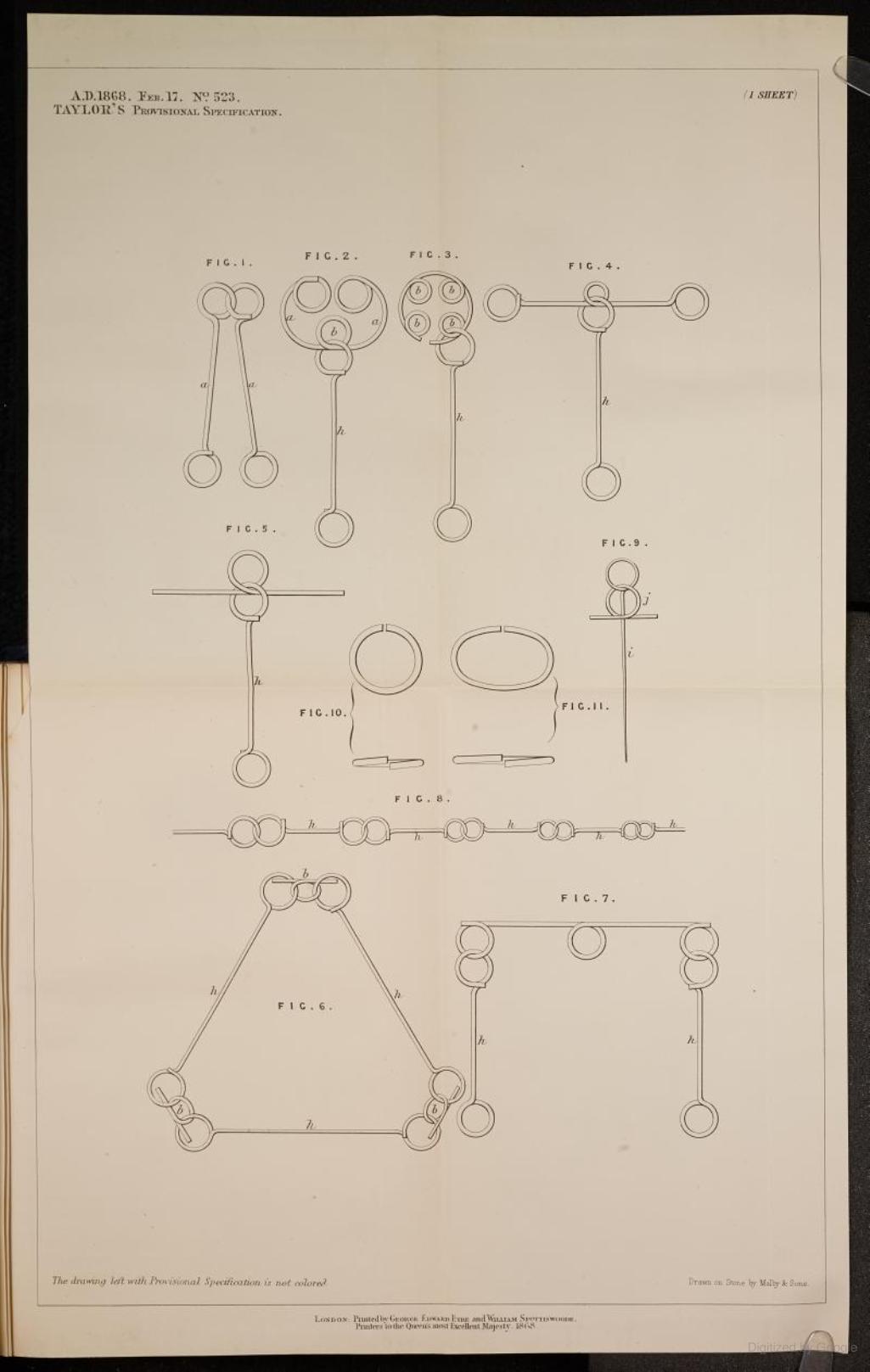
What about some well known wire puzzles, like the bent nails or the heart and bow? Let’s start with the bent nails puzzle. It seems like this puzzle has been around forever. But the earliest known reference I could find was the 1910 patent. There are countless cases of a patent being issued for something that had already existed long before, so we can’t say for sure that this is where the idea originated. But I can’t find any earlier references. Plus the modern wire nail originated in 1860, so anything before this would have used older types of nails, such as cut nails or hand-wrought (forged) nails, so may not have been easily bent into the puzzle shape.
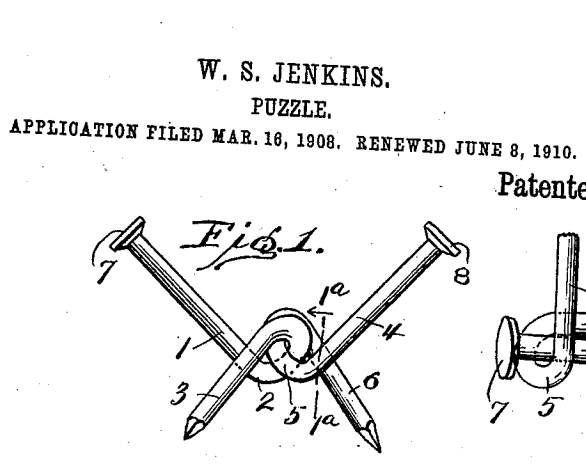
As for the Heart and Bow puzzle, the earliest one I could find remotely resembling this is from the 1873 patent. In this patent, they use a double bow, so I assume the puzzle with the single bow already existed, but I haven’t been able to find an earlier reference than this one.
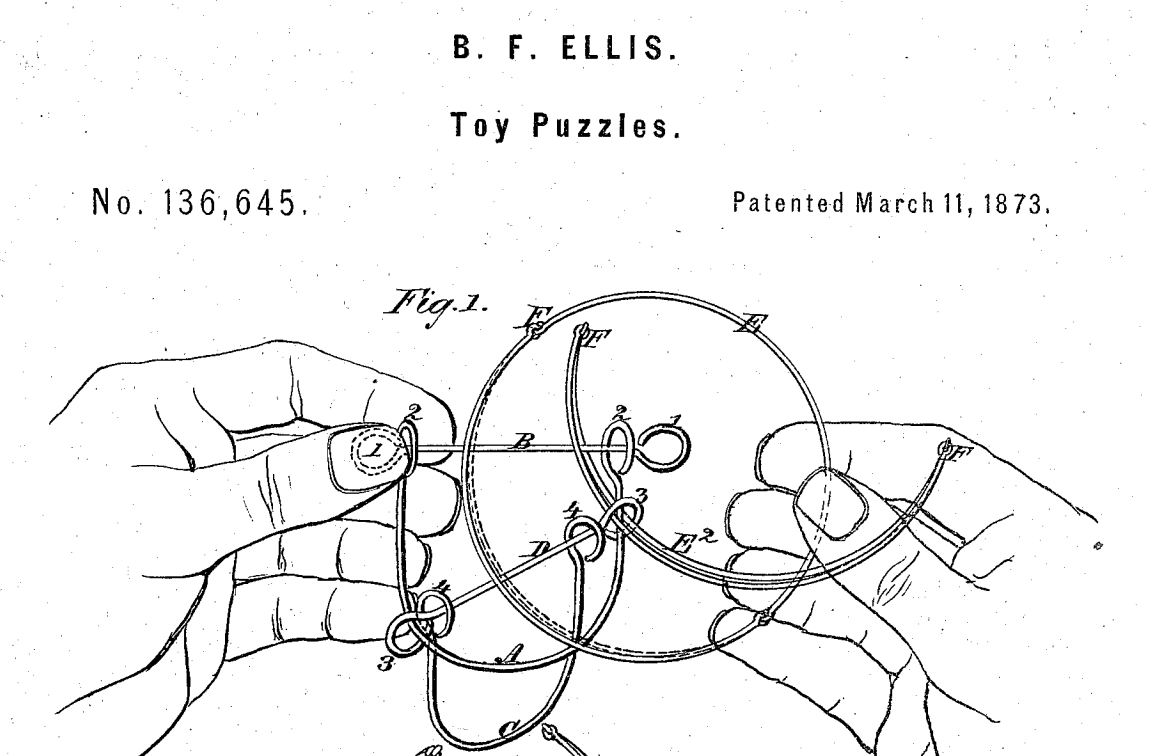
Still reading? Thank you! As a reward, here is some more trivia. Most early puzzle books show the reader how to make the puzzles, presumably because the puzzles were not readily available for purchase. So what’s the earliest example I can find of a mass produced wire puzzle for sale? That would be the Spiral Ring and Ball puzzle, sold by Perry & Co. in their 1881 catalog.
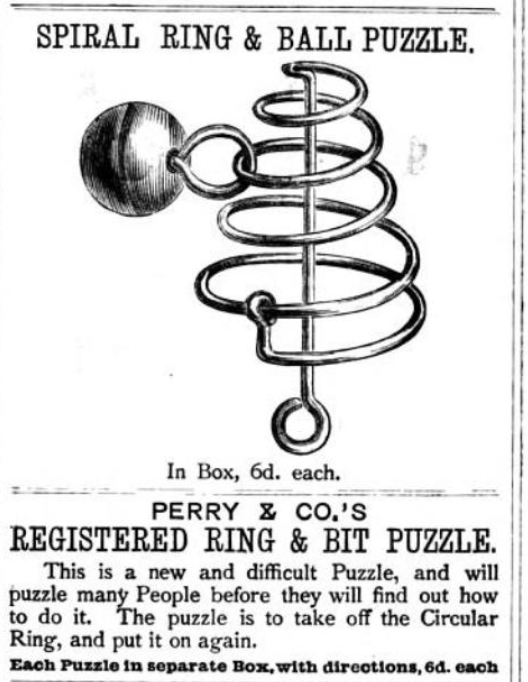
As an aside, I found another metal tanglement puzzle that dates back to the 1800s, even before the 1860s. It is known as the horse hobble puzzle, or Mormon hobble. It had a practical use - it would allow the horse to graze without running away, and removing it was tricky, so prevented thieves from stealing the horses if they didn’t know the secret. John D. Lee records an early account of this puzzle on September 8th, 1846: “… we halted for the night having good Mormon Iron Puzzle Hobbles we secured out teams let them to grass…” Even though this isn’t a wire puzzle, it’s an example of an early metal puzzle.
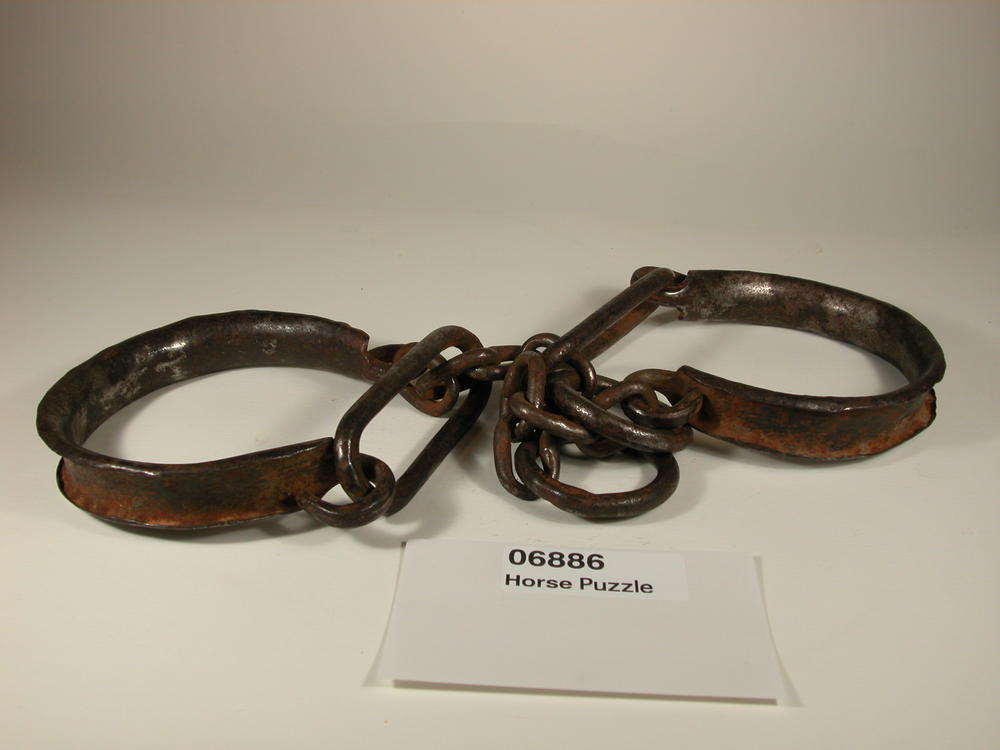
An ask to my dear reader . . Are you aware of any first hand accounts of wire puzzles dating before 1860s? I’ve only searched English sources so there might be some references in other languages, so would love to hear about any. I know there is speculation that these puzzles might date back to ancient Chinese dynasties, but I am more interested in what we can actually verify, and how far back we can push the date.

